Charles IV Proclamation medals
Charles IV was King of Spain from 1788 to 1808.
Mexico City
El Arzbispo


C-21a Silver Medal (Stack’s Bowers NYINC Auction, 15 January 2022, lot 2344)
This medal was designed by Gerónimo Antonio Gil. The obverse has the laureate and draped bust of Charles IV facing right and the reverse the laureate and draped bust of Queen Maria Luisa facing left.
Durango (Nueva Cantabria)
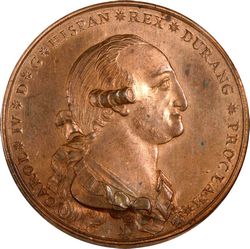

C-56c Bronze Proclamation Medal (Stack’s Bowers NYINC Auction, 19 January 2022, lot 7907)
The reverse has the coat-of-arms of Durango. The Latin inscription on the reverse refers to Novae Cantariae, which translates to Nueva Cantabria in Spanish; the old name for Durango.
Guadalajara
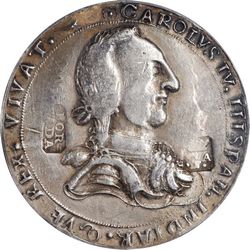
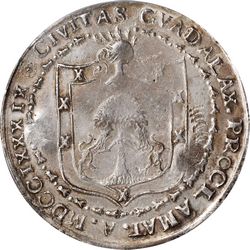
C-61 Silver Proclamation Medal (Stack’s Bowers Auction, 16 January 2021, lot 22265)
The obverse has an armored and laureate bust, flanked by mint applied countermarks "FOR-CADA" and crowned "GA.", both within shaped borders all within a corded border, legend around. The reverse has the coat of arms of Guadalajara within a tulip border with legend around.
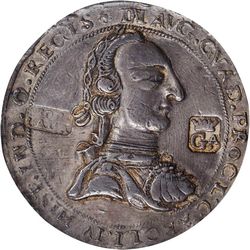

C-61 Silver Proclamation Medal (Stack’s Bowers ANA Auction -20 August 2021, lot 41161)
This medal was produced by the local silversmith Forcada.
Guanajuato
Los Mineros
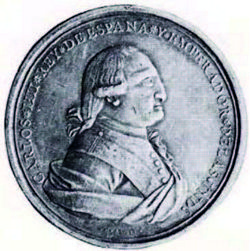
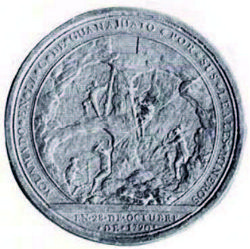
A detailed analysis of these medals is given here.
Querétaro
Real de Catorce
Sombrerete
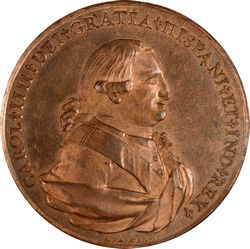
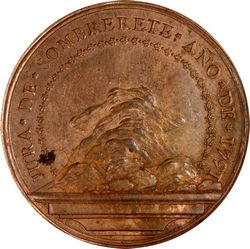
C-209a Silver Medal (Stack’s Bowers NYINC Auction, 19 January 2022, lot 7918)
This medal was designed by Gerónimo Antonio Gil. The obverse has the rightward facing bust of Charles IV while the reverse has a an unusual rock formation as the focal reverse design. While unstated on the medal, this almost certainly was chosen in reference to the unique rock formations in Sombrerete, Zacatecas that today make up part of the Sierra de Organos National Park.
Valladolid
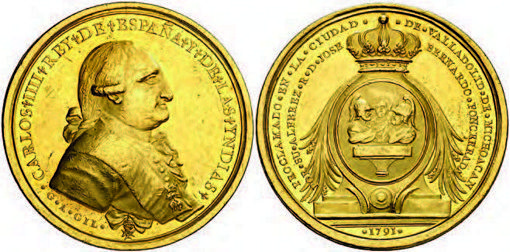
The proclamation of Charles IV in Valladolid is recounted here.
Zamora
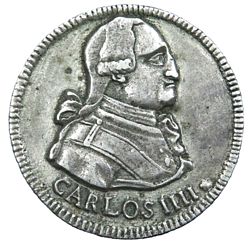

C-262 Proclamation Medal – Zamora D.N.E (De Nueva España)
This medal was presented on 15 January 1791 in the king’s proclamation ceremony in the town, two years after his coronation. We knew of its existence through a notice published in the Gazeta de MéxicoGazeta de México, Tomo. IV, Núm. 36, 21 June 1791 where the medal is described both in obverse and reverse.
Zamora Junio 3.
La tarde del 15 de Enero de este año, el Regidor Decano D. Isidro Castellanos haciendo las funciones de Alferez Real, proclamó á S.M. por Rey de España y de las Indias en un Tablado que se reigió al efecto en la Plaza á la frente de las Casas Consistoriales, costosamente adornado, é iluminado de achas de cera de Castilla, en que estaban colocados baxo de dosel los Retratos de nuestros Augustos Soberanos.
Terminando en él el primer acto de la Proclamacion con quanta solemnidad fué posible. Descendió el citado Regidor, acompañado de los demas Individuos que componen el Ilustre Cabildo y otras Personas distinguidas, y tomando los caballos en que se habían conducido desde la casa del primero, siguió el Paseo por las calles asignadas, que estaban vistosamente aderezadas, yendo por delante los Gobernadores, Alcaldes y demas Oficiales de República de los Pueblos de esta Jurisdiccion, unos en caballos enjaezados, y todos decentemente vestidos, con variedad de Danzas y otras diversiones que inventaron, cerrándolo una Compañía de veinte y seis hombres uniformemente vestidos, y con música militar conducida de la Ciudad de Querétaro.
Llegados á la Iglesia Parroquial, á cuya puerta aguardaba el Venerable Clero presidido del Cura Lic. D. Dionisio Sandoval y Roxas, se procedió al segundo acto, arrojando éste muchas monedas dobles del cuño corriente, y continuando el Paseo, se celebró el tercero inmediato á la casa del Subdelegado, que iba al lado correspondiente de dicho Regidor Decano, arrojando tambien aquel muchas de las mismas monedas.
Últimamente terminó la ceremonia habiendo llegado el Paseo á la casa del expresado Regidor, quien como en el primer acto esparció con igual generosidad cantidad de medallas en que estaba gravado el Real Busto y la inscripcion Zamora de Nueva España año de 1791, y entrando toda la distinguida comitiva á una bien dispuesta sala que estaba preparada para el refresco, se sirvió con igual orden que esplendicez. Concluido este obsequio ya entrada la noche, se dexó ver la villa vistosamente iluminada, como tambien en las dos siguientes, y en cada una se quemaron en la Plaza Real cinco árboles de fuego de sobresaliente invencion.
The medal remained in the dark for a very long time. It first appeared photographed in a publication in 1972 as an annex to Frank W. Grove book Medals of Mexico Vol. II 1821 to 1971 in which he added information to his previous book Medals of Mexico Vol. I Medals of the Spanish Kings where it was mentioned. Grove attributed the ownership of this first presented medal to Dr. A. Barbero and so far this piece and two others are the only ones reported.
